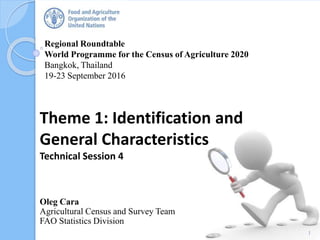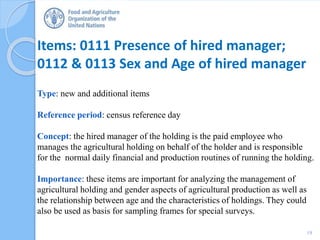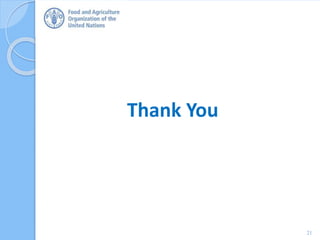This document discusses items related to the identification and general characteristics of agricultural holdings that are included in Theme 1 of the World Programme for the Census of Agriculture 2020. It provides background on some key items, including respondent, legal status, sex and age of holder, main purpose and activities. It also discusses some new items such as proportion of income from agriculture, main agricultural activity, and presence and characteristics of a hired manager. Country experiences from Indonesia's 2013 Agricultural Census are presented, showing items collected on identification, location, agricultural activities, main operator, and household income source.




















